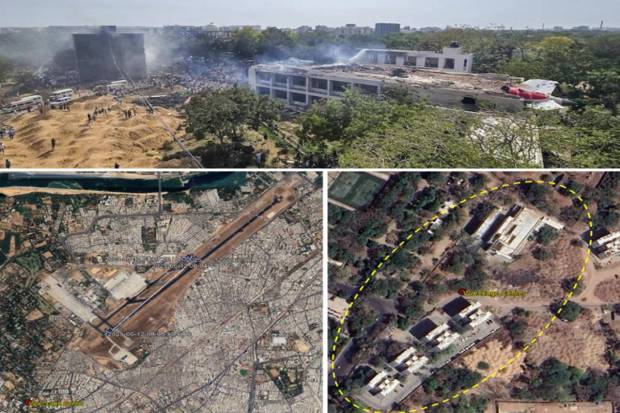-

The preliminary report on the Air India Flight AI 171 crash, released by India’s Aircraft Accident Investigation Bureau, reveals that the fatal accident was triggered by a sudden cut-off in fuel supply to both engines seconds after takeoff from Ahmedabad on 12 June 2025. The Boeing 787-8’s engine fuel control switches were found in the ‘CUTOFF’ position, an unusual scenario during flight, leading to a total loss of thrust. Cockpit voice recordings captured one pilot questioning the other about the fuel cut-off, with both denying responsibility, deepening the mystery. Despite attempts to restart the engines, the aircraft crashed into the BJ Medical College hostel, killing 260 people, including 241 on board and 19 on the ground. No technical defects, fuel contamination, or hazardous materials were found, and the aircraft’s configuration was correct for takeoff. The investigation is ongoing, with further analysis of flight data and maintenance records underway.
-
Overview of the crash site near Ahmedabad airport, showing debris scattered all over the residential building. (Photo source: AAIB)
-
The tail section and right main landing gear are seen inside the northeast wall of the building A. Indicating preliminary heavy structural contact that happened on this side during the downfall. (Photo source: AAIB)
-
The vertical stabilizer was detached from the fuselage and was retrieved from 200 feet from the point of impact. (Photo source: AAIB)
-
The right engine got separated after hitting a water tank on the top of building A. It came down under the structure, aligned southwest of the flight crash path. (Photo source: AAIB)
-
Part of the right wing was found heavily destroyed across Building A and Building B. The Outboard section of the wing was recovered over 500 feet from the first contact point. (Photo source: AAIB)
-
The left main landing gear and mid left section were immersed in the upper floors of Building C. In the image, the aircraft continued to be largely intact before impacting several structures. (Photo source: AAIB)
-
The left engine hit the base of Building D and resulted in major damage to the wall. Fire damage confirms post-impact ignition around this engine area. (Photo source: AAIB)
-
Nose landing gear was found 300+ feet southwest of the initial impact with Building A. (Photo source: AAIB)
-
Fuselage sections (aircraft’s main body section) continued to shatter across Buildings C through F. Rubble extends over 700 feet, suggesting high-speed ground impact. (Photo source: AAIB)
-
The flag handle was discovered in the 5 degree position, which was consistent with the normal takeoff setting. (Photo source: AAIB)
-
Landing gear level was found in the ‘’down’’ position, which was similar to the normal post-takeoff sequence. (Photo source: AAIB)
-
Thrust lever quadrant was retrieved in a severely burned condition, but was mechanically placed near idle. (Photo source: AAIB)
-
Forward and aft Enhanced Airborne Flight Recorders (EAFR) collected from the debris were both severely damaged. (Photo source: AAIB)
-
As per the CCTV footage, the Ram Air Turbine (RAT) was deployed soon after the take-off. The implementation of RAT confirms total power loss, leading to automatic deployment of emergency systems. (Photo source: AAIB)